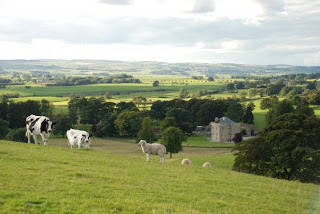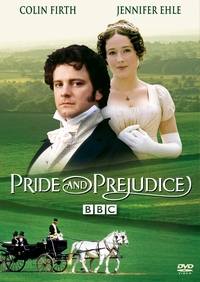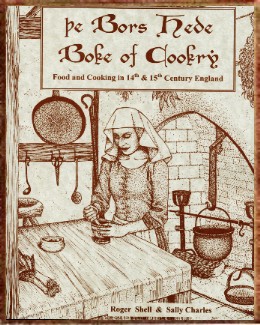 Did you know that the eighth Duke of Devonshire, known to his friends as "Harty Tarty," was told off by Queen Victoria for picking his nose at dinner. A poor shot, he once killed a pheasant and his gun-dog and wounded two bystanders (one of whom was his chef) with a single cartridge.
Did you know that the eighth Duke of Devonshire, known to his friends as "Harty Tarty," was told off by Queen Victoria for picking his nose at dinner. A poor shot, he once killed a pheasant and his gun-dog and wounded two bystanders (one of whom was his chef) with a single cartridge."The British empire, sir," exclaimed an orator, "is one on which the sun never sets."
"And one," replied an auditor, "in which the tax-collector never goes to bed."
Baldulf, the medieval soothsayer, prophesied to the king that his favourite mistress would soon die. Sure enough, the woman died a short time later. The king was outraged at the soothsayer, certain that his prophecy had brought about the woman's death. He summoned Baldulf and commanded him, "Tell me when you will die!" Baldulf realized that the king was planning to execute him straightaway, no matter what answer he gave. "I do not know when I will die," he answered finally. "I only know that whenever I do die, you will die two days later."
The shortest war on record was between Zanzibar and Britain in 1896. Zanzibar, now part of Tanzania, surrendered after 38 minutes.
A bus load of tourists arrived at Runnymede on the banks of the Thames in Berkshire, England. They gathered around the guide who explained, "This is the spot where the Barons forced King John to sign the Magna Carta." A fellow at the front of the group asked, "When did that happen?" "1215," answered the guide. The man looked at his watch and said, "Looks like we just missed it by a half hour."
The Sillies...
Why were the early days of history called the dark ages? Because there were so many knights.
What kind of lighting did Noah use for the ark? Floodlights and Ark lights.
What English King invented the fireplace ? Alfred the Grate.
How was the Roman Empire cut in half? With a pair of Caesars.
Why did Henry VIII have so many wives? He liked to chop and change.
Asked by the court barber how he wanted his hair cut, the king replied, "In silence."
And The Utter Sillies...
Michelangelo's Mother: Can't you paint on walls like other children? Do you have any idea how hard it is to get that stuff off the ceiling?
Paul Revere's Mother: I don't care where you think you have to go, young man, midnight is past your curfew.
Mona Lisa's Mother: After all that money your father and I spent on braces, that's the biggest smile you can give us?
Mary's Mother: I'm not upset that your lamb followed you to school, but I would like to know how he got a better grade than you.



 Some of the Hammertons ran afoul Henry VIII with predictable results. The Crown was happy to annex their vast holdings from Lancaster to York.
Some of the Hammertons ran afoul Henry VIII with predictable results. The Crown was happy to annex their vast holdings from Lancaster to York.  Unfortunately, the up-to-do castle came to the attention of the Ministry of Defense during World War II to house POWs. The ruined castle was then shunted off to the Hammertons briefly before being sold to Harry Lund of Otley. Lund and archeologist Tot Lord stripped the castle of all accoutrements, including paneling, and sold them piecemeal to all comers. In 1965, the Hargreaves bought it and sold it in 2004 to the Shaws.
Unfortunately, the up-to-do castle came to the attention of the Ministry of Defense during World War II to house POWs. The ruined castle was then shunted off to the Hammertons briefly before being sold to Harry Lund of Otley. Lund and archeologist Tot Lord stripped the castle of all accoutrements, including paneling, and sold them piecemeal to all comers. In 1965, the Hargreaves bought it and sold it in 2004 to the Shaws.


 It gives me the
It gives me the  Here's what Amanda has to say about her nomination: "I'm especially pleased it's this story, since I got to work on this novella with my good friends Diane Gaston and Deb Marlowe. And also because I have two spin-offs from this story coming out! A novel about Nicholas and Lady Emily and another novella Mistletoe and Folly that'll be out this Christmas."
Here's what Amanda has to say about her nomination: "I'm especially pleased it's this story, since I got to work on this novella with my good friends Diane Gaston and Deb Marlowe. And also because I have two spin-offs from this story coming out! A novel about Nicholas and Lady Emily and another novella Mistletoe and Folly that'll be out this Christmas." A & E has digitally remastered the pinnacle of perfection, for some, in Jane Austen adaptations, the 1995 miniseries of
A & E has digitally remastered the pinnacle of perfection, for some, in Jane Austen adaptations, the 1995 miniseries of  "Now you can really see the drops of water run down Darcy's chest after he takes his plunge into the Pemberley pond," says
"Now you can really see the drops of water run down Darcy's chest after he takes his plunge into the Pemberley pond," says 


 The bicentennial of the beginning of the British Regency is next year, 2011. It was at Carlton House on February 6, 1811 that the Prince of Wales took the oath which made him Regent. At nine p.m. on June 19, 1811 the Prince Regent held a feat at Carlton House in celebration of his assumption of the Regency.
The bicentennial of the beginning of the British Regency is next year, 2011. It was at Carlton House on February 6, 1811 that the Prince of Wales took the oath which made him Regent. At nine p.m. on June 19, 1811 the Prince Regent held a feat at Carlton House in celebration of his assumption of the Regency. As a lover, reader, and aspiring writer of Regency romances, I was wondering what Romancelandia has in store to celebrate this.
As a lover, reader, and aspiring writer of Regency romances, I was wondering what Romancelandia has in store to celebrate this. How about a lavish foodie banquet with 100 of your close friends?
How about a lavish foodie banquet with 100 of your close friends?
 A
A  In his critique, Tolstoy wrote, "I remember the astonishment I felt when I first read Shakespeare. I expected to receive a powerful aesthetic pleasure, but having read, one after the other, works regarded as his best: King Lear, Romeo and Juliet, Hamlet, and Macbeth, not only did I feel no delight, but I felt an irresistible repulsion and tedium..." He further characterized Shakespeare as "a bad dramatist and not a true artist at all."
In his critique, Tolstoy wrote, "I remember the astonishment I felt when I first read Shakespeare. I expected to receive a powerful aesthetic pleasure, but having read, one after the other, works regarded as his best: King Lear, Romeo and Juliet, Hamlet, and Macbeth, not only did I feel no delight, but I felt an irresistible repulsion and tedium..." He further characterized Shakespeare as "a bad dramatist and not a true artist at all." To this, Orwell wrote, "One's first feeling is that in describing Shakespeare as a bad writer he is saying something demonstrably untrue. But this is not the case. In reality, there is no kind of evidence or argument by which one can show that Shakespeare, or any other writer, is 'good.' Artistic theories such as Tolstoy's are quite worthless, because they not only start out with arbitrary assumptions, but depend on vague terms ('sincere,' 'important,' and so forth) which can be interpreted in any way one chooses. Properly speaking one cannot answer Tolstoy's attack."
To this, Orwell wrote, "One's first feeling is that in describing Shakespeare as a bad writer he is saying something demonstrably untrue. But this is not the case. In reality, there is no kind of evidence or argument by which one can show that Shakespeare, or any other writer, is 'good.' Artistic theories such as Tolstoy's are quite worthless, because they not only start out with arbitrary assumptions, but depend on vague terms ('sincere,' 'important,' and so forth) which can be interpreted in any way one chooses. Properly speaking one cannot answer Tolstoy's attack." So whenever romance novels of hugely successful writers come under attack as lacking in literary gravitas, it's important to bear in mind what's really important: the opinions of an opinionated few or the opinions of the wide reading populace, speaking loudly with their hard earned money and even harder earned time. No arguments need to be made of good prose, nuanced imagery, complex emotions, accurate historicals details, etc. etc. The readers have spoken.
So whenever romance novels of hugely successful writers come under attack as lacking in literary gravitas, it's important to bear in mind what's really important: the opinions of an opinionated few or the opinions of the wide reading populace, speaking loudly with their hard earned money and even harder earned time. No arguments need to be made of good prose, nuanced imagery, complex emotions, accurate historicals details, etc. etc. The readers have spoken.

 I blogged
I blogged  Londoners are not allowed to keep a pigsty in the front of their homes.
Londoners are not allowed to keep a pigsty in the front of their homes. A law introduced in 1307 ensures that the head of any dead whale found on the British coast becomes the property of the king and the tail belongs to the queen—should she need the bones for her corset.
A law introduced in 1307 ensures that the head of any dead whale found on the British coast becomes the property of the king and the tail belongs to the queen—should she need the bones for her corset.  Not technically against the law, but it is not allowed for anyone to die in Parliament. The death certificate is not issued until after the body is removed from Parliament. The reason? Anyone dying in Parliament would be legally entitled to a state funeral as Parliament is part of the Palace of Westminster.
Not technically against the law, but it is not allowed for anyone to die in Parliament. The death certificate is not issued until after the body is removed from Parliament. The reason? Anyone dying in Parliament would be legally entitled to a state funeral as Parliament is part of the Palace of Westminster. Elizabeth I was responsible for the law that banned women from using cosmetics to lead a man into marriage. This included false hair, makeup, false hips(?), and high-heeled shoes.
Elizabeth I was responsible for the law that banned women from using cosmetics to lead a man into marriage. This included false hair, makeup, false hips(?), and high-heeled shoes.
 Markus Urban Mindaugas is a
Markus Urban Mindaugas is a  On February 25, 2010, Markus blogged about his failure to achieve his goal and the lessons he learned along the way for
On February 25, 2010, Markus blogged about his failure to achieve his goal and the lessons he learned along the way for  Workshop with Editor Angela James of
Workshop with Editor Angela James of 

.jpg) The only known survivor from Cædmon's oeuvre is his
The only known survivor from Cædmon's oeuvre is his  For Seattle-area writers, WRITERS BOOT CAMP with author BOB MAYER is an intensive five-week writing series every Tuesday evening in March at
For Seattle-area writers, WRITERS BOOT CAMP with author BOB MAYER is an intensive five-week writing series every Tuesday evening in March at  New York Times bestselling author
New York Times bestselling author